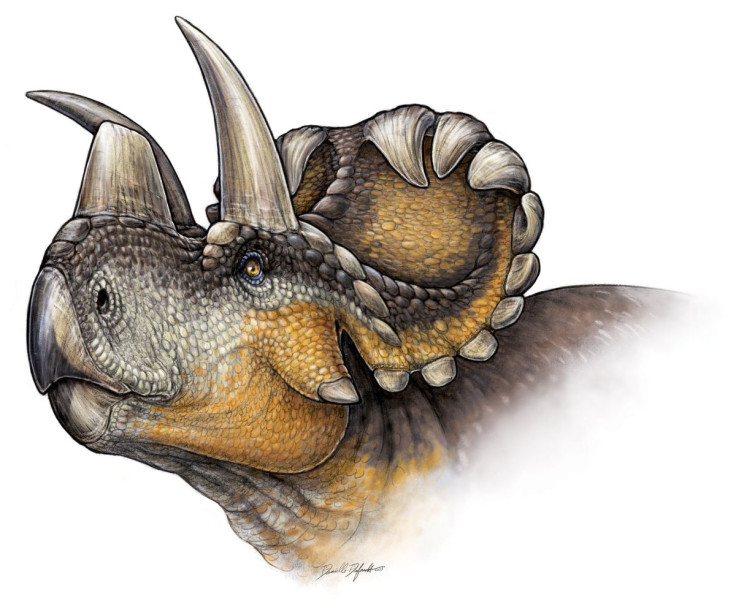Science Ink: Dino Hunter Wendy Sloboda Rocks 'Wendiceratops' Tattoo Of Dinosaur Named After Her

A new dinosaur species was announced Thursday. Wendiceratops is a new dinosaur relative of the triceratops and features distinctive horns on its skull. The species of horned dinosaur was named after Wendy Sloboda, a famed dinosaur hunter in Alberta, Canada. Sloboda discovered fossils of the new species of dinosaur in 2010, according to CBC News.
In the world of dinosaur fossils, Sloboda is something of a rock star. She was the first to discover a dinosaur nesting site, complete with dinosaur eggs and embryos, in Canada. Sloboda has discovered several fossil sites throughout Alberta and discovered the Wendiceratops fossil near Milk River in Pinhorn Provincial Grazing Reserve. Sloboda and paleontologists David Evans, from the Royal Ontario Museum, and Michael Ryan, curator of vertebrate paleontology at the Cleveland Museum of Natural History, spent three years finding 200 fossils in the area. It is believed the Wendiceratops herd discovered by Sloboda, Evans and Ryan may have died in a flood.
With the publication of their discovery in the journal PLOS One, the new dinosaur species was officially named Wendiceratops pinhornensis. "I couldn't think of someone who deserves it more," Evans said to CBC News regarding the decision to honor Sloboda.
More #scienceink! A Wendiceratops tattoo, worn by fossil hunter & namesake Wendy Sloboda http://t.co/TR1ht2mSWt pic.twitter.com/8rMRzGFci9
— carlzimmer (@carlzimmer) July 9, 2015To celebrate, Sloboda got a Wendiceratops tattoo on her forearm. That's definitely an impressive bit of #ScienceInk on her ar. The hashtag, named after Carl Zimmer's "Science Ink: Tattoos of the Science Obsessed," features plenty of great geek tattoos.
Caffeine Molecule Ink - commissioned by @scicurious #SciArt #scienceink http://t.co/7tkVsRtK5c pic.twitter.com/ISvVZQebJE
— Glendon Mellow (@FlyingTrilobite) March 6, 2015#tbt to that time @sarahbures & I realized we had matching #goldenratio tattoos. #scienceink pic.twitter.com/Q6KDj680GB
— Hanna J Sender (@no_such_zone) July 9, 2015© Copyright IBTimes 2024. All rights reserved.











